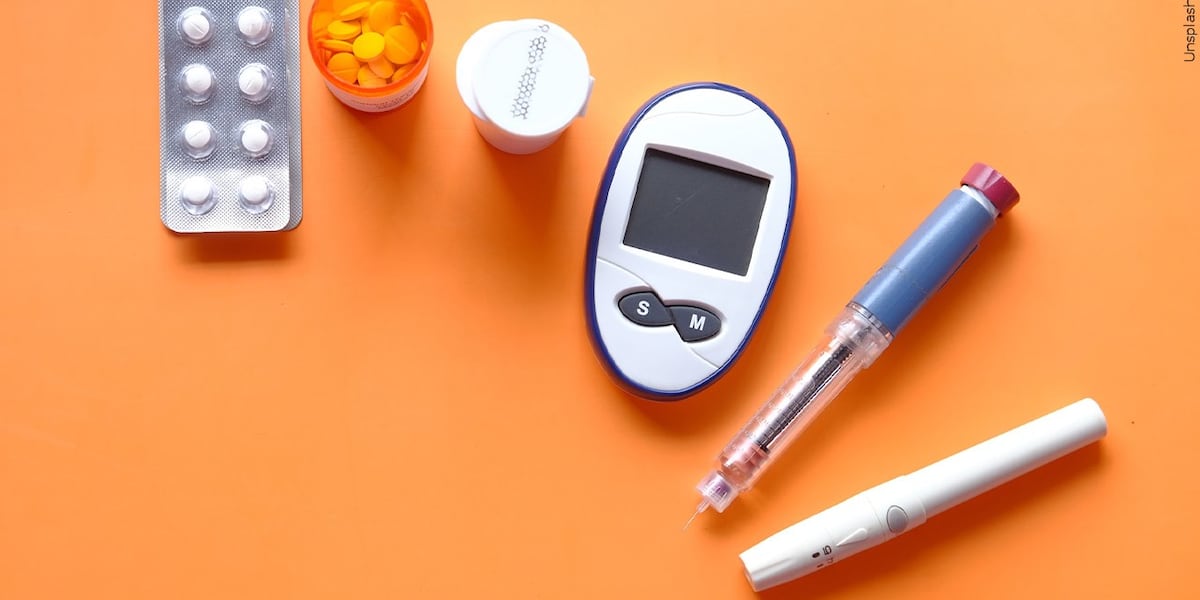
HASTINGS, Neb. (KSNB) – November is Diabetes Awareness Month and the South Heartland District Health Department (SHDHD) wants you to be aware of what they and the Hastings Diabetes on Track Coalition call the ‘silent killer:’ pre-diabetes.
Type 2 diabetes is a disease that affects how your body turns food into energy. Most people’s bodies naturally produce a hormone called insulin, which helps convert sugars from food we eat into energy that the body can use or store for later. When you have diabetes, your body either doesn’t make insulin, or it is not able to use the insulin the way it should.
Pre-diabetes is a serious condition; it is when your blood sugar level is higher than normal, but not yet high enough to be diagnosed as type 2 diabetes. This can happen because your body may not make enough insulin to help change food to energy, or your body may not be able to use the insulin as it should.
More than 30 percent (one in every three) of U.S. adults have pre-diabetes. In SHDHD’s 4-county area of Adams, Clay, Nuckolls and Webster counties, that is about 11,000 adults. In Hastings, about 65 percent of adults age 30-70 are at risk for prediabetes, according to the Hastings Diabetes on Track Coalition.
Prediabetes is called the ‘silent killer’ because many people don’t know they have it because it doesn’t have any symptoms. Pre-diabetes can lead to diabetes, which is the 8th leading cause of death and the leading cause of kidney failure, lower limb loss and adult blindness.
Fortunately, pre-diabetes is reversible with a change of diet and exercise habits. South Heartland Health Executive Director, Michele Bever said there are some ways you can know if you’re at risk for getting the disease.
”There’s some things that people can do to find out whether they are at risk and one of those is to take a risk test,” Bever said. “It’s a little survey that asks some questions to understand your risk, so if you’re answering certain ways to any of those questions, then you may be at risk for pre-diabetes.”
Bever also said there are steps you can take at home if your risk is high from keeping the disease from progressing into diabetes.
”Ideally, you can take 150 minutes a week of exercise or movement. That doesn’t have to be a formal exercise program, that could be mowing your lawn or working in your garden,” Bever said. “Watching the amounts and types of foods that you eat is another step, including the types of proteins, carbohydrates and starches that you eat every day.”
She also said the trend for people diagnosed with diabetes and pre-diabetes is going up in their four-county area, due to obesity also being on the increase, which is a leading risk factor for the disease.
However, the Department is being proactive in the fight against it.
”It’s a growing problem and in fact, in our health district, we are setting priorities for health improvement over the next six years,” Bever said. “One of the priorities that was brought forward by our communities, is chronic disease conditions. That was one of the key things that people wanted to work on and that includes diabetes.”
Bever also said parents can take steps in protecting their kids from getting the disease by limiting screen time and making sure they eat healthy.
”It’s really important for parents to think about the balance for their kids,” Bever said. “Not only is it important for the adults, but it’s also important for the kids to get those healthy habits early in life, so eating healthy, moving more and finding fun ways to do that as a family is recommended.”
South Heartland Health offers a risk assessment test that you can view on their website, which calculates your risk for pre-diabetes through a survey, based on the answers to the following questions:
- How old are you?
- Are you a man or woman?
- If you are a woman – have you ever been diagnosed with gestational diabetes?
- Do you have a mother, father, sister or brother with diabetes?
- Have you ever been diagnosed with high blood pressure?
- Are you physically active?
- What is your weight category?
The risk test can tell you if you are at risk for diabetes. A way to know for sure if you have prediabetes or diabetes is to get screened.
Screening is a blood test that checks for blood sugar levels. If your blood sugar level is higher than normal, but not high enough to be diagnosed as diabetes, that means you have prediabetes. You can get these blood tests at your doctor’s office, at health fairs, and at some pharmacies.
For some ideas, try the SMART HUB for Diabetes Prevention, which was developed by the Hastings Diabetes on Track Coalition. You can find it on the SHDHD website.
From the SMART HUB, you can take the risk test, find out where to get screened for diabetes, how to eat healthy and how to be more active, learn more about the SMART MOVES diabetes prevention program, and how to connect with coaches to help support your desired lifestyle changes.
You can start by taking a risk test, talking to your doctor about the getting screened for diabetes, or contacting SHDHD for more information about area resources and prevention assistance.
Click here to subscribe to our KSNB Local4 daily digest and breaking news alerts delivered straight to your email inbox.
Copyright 2024 KSNB. All rights reserved.
